Can a city be home, inspiration, memory and reality? For sure, says Sooni Taraporevala through her latest book of photographs that follows Mumbai over 40 years
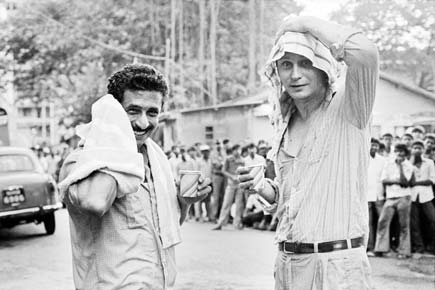
The searing afternoon heat notwithstanding, we are tempted to stand in the balcony of Sooni Taraporevala's Grant Road home to observe a fast altering city. Her humble abode, however, refuses to keep up. The warm air that floats from the whirring fan above us, and the mosaic floor, bursting with the earthiness of ochre and red, are remnants of a past, stubborn against the changes of weather or time. "The malls and towers of modern Mumbai don't interest me visually," says Taraporevala, as if to drive the point home.
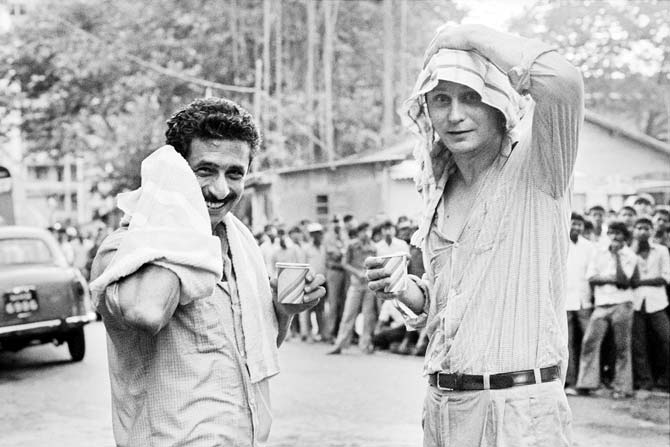
Naseeruddin Shah and Stellan Skarsgard on the set of The Perfect Murder, Bombay 1987. Images copyright © Sooni Taraporevala, Images courtesy: Sunaparanta
ADVERTISEMENT
We are sitting inside a spartan, but charming room that boasts a little of her fine artistry. The only semblance of her oeuvre are the pictures of the cast of Little Zizou (2008), her directorial debut, pinned on a white board. Otherwise, it's photographs by Henri Cartier-Bresson and "dear friend" Ketaki Sheth, that take up wall space.

The boy and the bay, Mumbai 2015. Images copyright © Sooni Taraporevala, Images courtesy: Sunaparanta
Over the last few weeks, Taraporevala has been working at hectic pace to close her second photography book to release in 17 years. The first, Parsis: The Zoroastrians of India (2000), documented stories of a community, she belongs to and understands best. The latest title, Home In The City: Bombay 1977 – Mumbai 2017 (HarperCollins India), which will be launched alongside a photo exhibition at Chemould Prescott Road from October 14 to 31, will take us through Taraporevala's city via 99 black and white photographs.
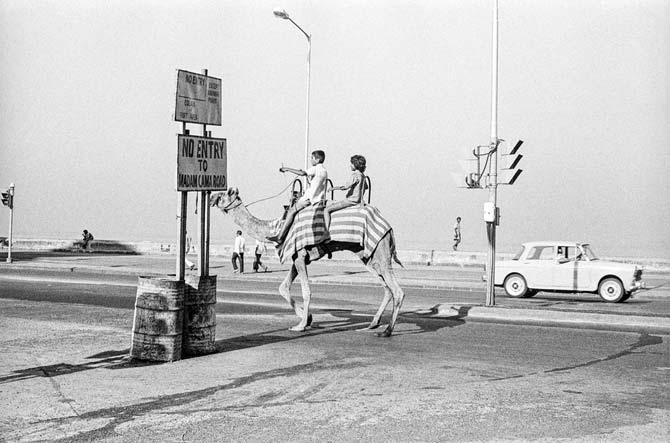
Camel on Marine Drive, Bombay 1977. Images copyright © Sooni Taraporevala, Images courtesy: Sunaparanta
The collection, curated by writer Siddharth Dhanvant Shanghvi, spans 40 years and offers the viewer a varied hue. From Taraporevala's inner worlds, which include private moments with family and friends to the burgeoning street life, the famed New Year's Ball and behind-the-film set scenes that the screenwriter has been associated with, the book shows both, her skill with the camera, and undying obsession with Bombay. With novelists Pico Iyer and Salman Rushdie offering us a window to her pictures with their essays, Home In The City brings together a prized company, one you'd like to relish at your own pace.
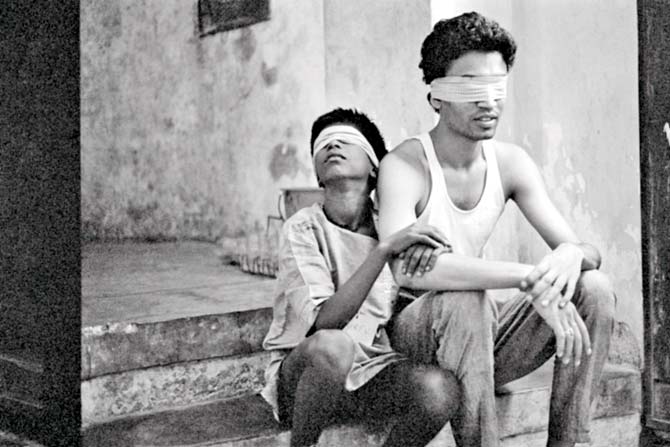 Sarfu and Irrfan Khan at the Salaam Bombay! workshop, Bombay 1987. Images copyright © Sooni Taraporevala, Images courtesy: Sunaparanta
Sarfu and Irrfan Khan at the Salaam Bombay! workshop, Bombay 1987. Images copyright © Sooni Taraporevala, Images courtesy: Sunaparanta
Taraporevala, however, is quick to mention that the book isn't intended at documenting the transformation of the city.
"I don't want to create expectations about offering a visual documentation of the city," she says, adding, "It's just a quirky and personal view of all the various worlds that I have inhabited and photographed through the years."
"If you look at the pictures, and the captions, you won't be able to say which were taken then and which are taken now. My style remains the same, and what interests me also remains the same. Objectively, of course, Mumbai has changed. It's uglier now, and a lot more crowded. One real difference, you can tell is on the streets. In all the old pictures, there was little traffic. You would see an odd Fiat or Ambassador. And, of course, we have the buildings. We are now surrounded on all sides by these towers. I hate it. I think greed is ruining this city," she adds.
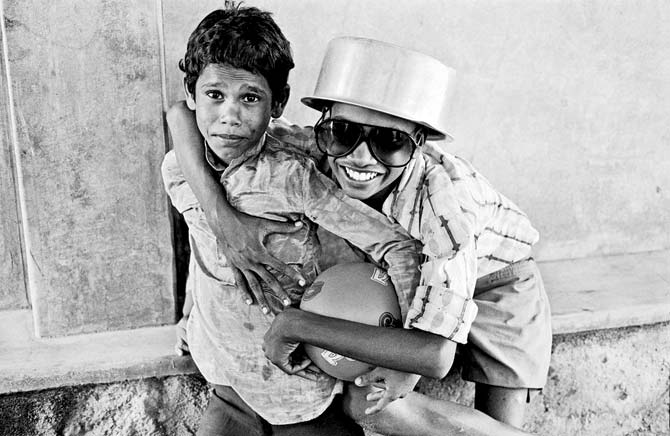
Selva and Ramesh, Bombay 1987. Images copyright © Sooni Taraporevala, Images courtesy: Sunaparanta
Having said that, Taraporevala believes there is plenty still to romance with the city through her lens. "Photography is very subjective because you are putting a frame around reality. And so, you can block out what you don't want to see."
It's this fascination for visual tricks that first drew Taraporevala to the camera. "My dad is a keen, amateur photographer and my granduncle was a studio photographer. So, I grew up seeing a lot of black and white photographs," she recalls.
"When I was 16, I went to Hong Kong for a holiday, and my aunt and uncle, who very kindly gifted me the trip, also gave me my first camera, an Instamatic. I took it to Harvard University in 1975, and after a few months of photographing all the autumn colours and snow blizzard, I felt I wanted a camera that would do more. So, I borrowed money from my roommate, and bought my first real camera, a Nikkormat," she adds.
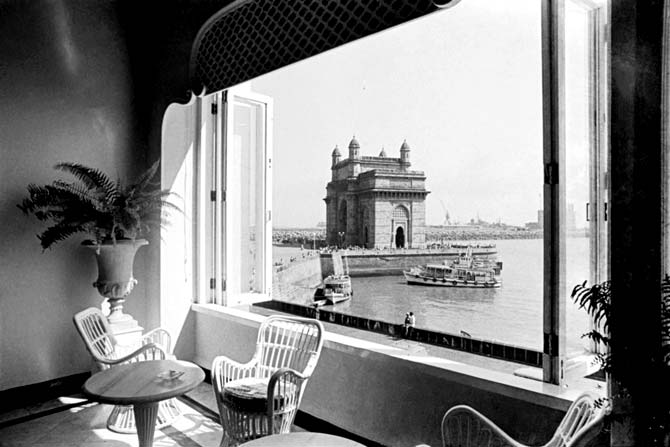
The Gateway of India from the Taj Mahal Hotel, Bombay 1977. Images copyright © Sooni Taraporevala, Images courtesy: Sunaparanta
After wrapping up a few photography courses abroad, and learning the ropes of developing and printing from fellow student, Steve Geovannis, who used to be a stringer for the Boston Globe, when Taraporevala finally returned to the home of her childhood, she decided to put her photography to practice.
Before her tryst with screenwriting for Mira Nair's award-winning Salaam Bombay! (1988), Taraporevala was into travel photography for magazines and newspapers. "But, as a profession, it took a backseat to screenwriting because that is what I did most and that is what allowed me to buy all the expensive [camera] equipment," she says.

Gajanan Maharaj, Bombay 1987. Images copyright © Sooni Taraporevala, Images courtesy: Sunaparanta
Her affair, however, continued. She moved to digital in 2004. "I was so enamored by it that I never looked back at my film camera," she says, "Until recently, when I found myself missing it [film]." Most of her recent works, featured in the book, have been shot on a Leica digital. Around five years ago, she chanced upon Instagram, and she still can't stop gushing about it. "I was an early convert," she says of the photo-sharing website, where she has uploaded over 3,000 pictures. "It's like a visual diary.
Whenever I take a picture on my iPhone, I upload it, so that I can look back at it and remember what I was doing then," she says.
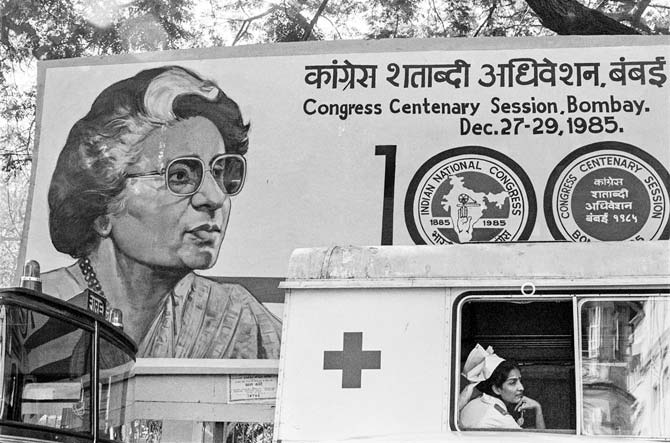
Nurse and poster of Indira Gandhi at the Congress Centenary Session, Bombay 1985. Images copyright © Sooni Taraporevala, Images courtesy: Sunaparanta
Sometime last year, when her writer friend Shanghvi, who also shares her love for photography, saw her iPhone pictures, he tried pushing her to do an exhibition around them. "We were discussing a lot of ideas," she says. But, the genesis of the book, says Taraporevala, owes much to Devika Daulet-Singh, founder of New Delhi gallery PHOTOINK. "Siddharth brought Devika in, and she suggested I focus on the city and not limit myself just to phone photos. As I went back to my archives, I realised the frames were overwhelmingly black and white. And, that's how the idea of this show developed."
With Dipti and Dattaraj Salgaocar of Sunaparanta producing the upcoming show, Taraporevala says her work got the much-needed impetus.
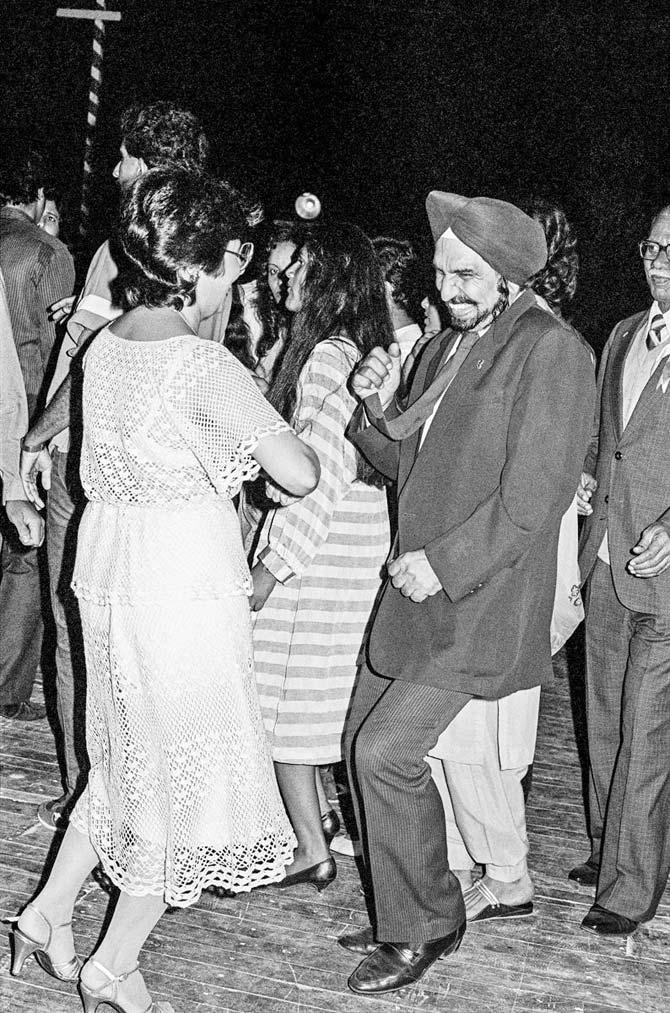
Rocking and rolling at the New Year's Eve Ball, Bombay 1985. Images copyright © Sooni Taraporevala, Images courtesy: Sunaparanta
And, Mumbai being the heartland of her inspiration for everything, from writing to films, this one came easily, she says. "I love this city. I will never tire of it. I am always, completely inspired by it. And, even though the city is imploding, I wouldn't live anywhere else. It's Mumbai meri jaan for sure."
Nothing, however, describes Taraporewala's fascination with the city as well as Iyer's sharp observations of her photographs. "...in the end, what really touches me is her reminder of the impression I've often carried back from trips to Bombay. The crowds, the public world, the shared dreams are all part of a sometimes devouring disorder that shows no signs of subsiding; but in the eyes and lives of individuals is a dignity, a resilience and a sweetness that nothing can erase," he writes in the book.
 Subscribe today by clicking the link and stay updated with the latest news!" Click here!
Subscribe today by clicking the link and stay updated with the latest news!" Click here!







